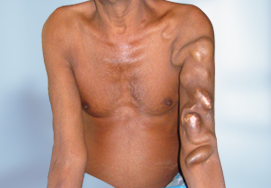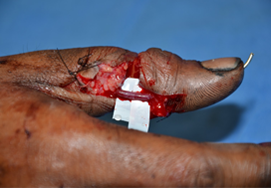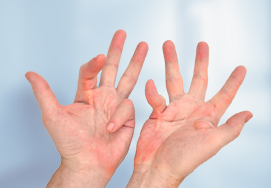Toe to thumb transplantation
Preferred for individuals with congenital anomalies such as symbrachydactyly or amniotic band syndrome/ constriction ring syndrome which result in absence of thumb. And people who have lost digits that occurred due to accident, illness, or injury.

- What is toe to thumb transplantation?
- What are the types of the surgeries?
- Which individuals are eligible for the surgery?
- Which individuals are not eligible for the surgery?
- How should I prepare for the surgery?
- What will happen during the surgery?
- What is the aftercare of the surgery?
- What are the postsurgical considerations?
What is toe to thumb transplantation?
The human thumb also known as the opposable thumb is unique and has greater functional ability compared to other digits of the hand. It accounts for almost 50% of the functions and agility of the hand.
Similarities between the fingers of hand and foot have been noticed, and surgeons found suitable to replace the missing thumb with toe fingers in the individuals born without a thumb or lost the thumb due to trauma or accidents.
Toe-to-thumb transplantation surgery helps to restore both aesthetic and functional loss to the hand with a little aesthetic and functional loss to the foot.
Microsurgery is performed during toe-to-thumb transplantation which helps to connect small arteries, veins and nerves making the reconstruction procedure successful.
What are the types of the surgeries?
Toe-to-thumb transplant surgery is performed using two different techniques using:
- Great toe finger is considered suitable to replace the thumb. Greater toe finger is comparatively wider than the thumb, but after reconstruction, the great toe decreases in size up to one-third of its original size. Using the big toe affects the general appearance of the foot.
- The toe next to the big toe is considered the better option by few surgeons as removing the 2nd finger may not cause much difference in the aesthetic appearance of the foot compared to the greater toe. The second toe is the longest toe, has useful characteristics of a digit and its transplantation does not alter functionality of the foot.
Which individuals are eligible for the surgery?
Thumb reconstruction is preferred for individuals with:
- Congenital anomalies such as symbrachydactyly or amniotic band syndrome/ constriction ring syndrome result in absence of thumb.
- People who have lost digit that occurred due to accident, illness, or injury.
Which individuals are not eligible for the surgery?
Toe-to-thumb transplantation is not suitable in the emergency amputation of the thumb. In such instances, the thumb needs to heal and recover to get prepared for the transplantation.
If your toe has anatomical differences, had previous injuries, scars or any circulatory problems, it may not be suitable for the toe-to-thumb transplantation surgery.
How should I prepare for the surgery?
Your doctor will discuss with you about the instructions to be followed before surgery. Toe-to-thumb transplantation recovery requires a lot of time so you should be well prepared for that. You should understand that the aesthetic appearance of the foot also changes after the surgery. So, be prepared for that before undergoing the surgery.
What will happen during the surgery?
The surgery is carried out under general anesthesia. Your doctor first examines the hand with the missing thumb to assess the presence of appropriate blood vessels, nerves, and tendons. If these structures are missing the transplantation may not be possible.
If the structures are successfully identified, then the surgeon proceeds for the removal of the toe finger along with its blood vessels, nerves, and tendons. The gap between the fingers of the toe is closed with the sutures and dressing is applied at the toe.
Then the surgeon joins the toe bones to the hand bones followed by the tendon, nerves, and blood vessels. After that, your surgeon covers the hand with dressing to protect it during the recovery.
What is the aftercare of the surgery?
You may achieve the normal sensation and functionality of the reconstructed thumb within 4 to 6 months. After the surgery whole of the hand is covered with the dressing with a plaster of paris splint which leaves your hand immobilized. First change of dressing is done after two or three weeks until then the hand is left undisturbed.
Splintage is continued till bony union is achieved.
While performing the first change of dressing your surgeon may induce brief anesthesia for your comfort, and this is carried out in the operation theater or ward. Stitches used during closing are incisions usually absorbable, but the pins used to fix the bones are removed without the help of anesthesia.
What are the postsurgical considerations?
There are few risks associated with the toe-to-thumb transplant surgery which includes:
- Bleeding
- Infection
- Anastomotic thrombosis – usually reversed by re-exploration
- Donor area sutures line dehiscence
- Lastly 5% failure rate – This occurs when there is cessation of blood flow in the artery or veins in a transplant, which could not be reversed even after timely intervention













